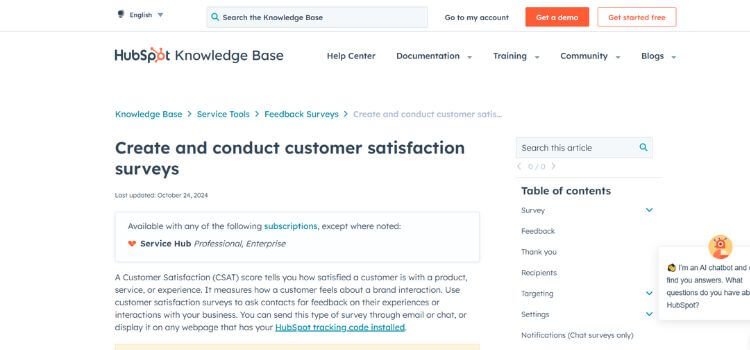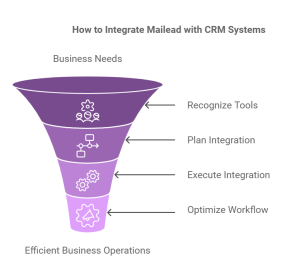Running a small business is like juggling many balls at once. You’re managing sales, marketing, and operations—all while trying to keep your customers happy. But how do you know if your customers are truly satisfied? That’s where customer feedback tools for small businesses come in. These tools can help you gather, analyze, and act on customer opinions to improve your business.
In this guide, I’ll share some of the best customer feedback tools for small businesses. I’ll also add my personal experiences, ask you some questions, and keep the tone conversational—just like we’re chatting over coffee. Let’s explore together!
Table of Contents
Why is Customer Feedback Important?
Imagine running a restaurant where customers don’t tell you what they like or dislike. You’d keep serving the same dishes without knowing if they’re happy or planning never to return. Scary, right? Feedback is your secret sauce. It tells you what you’re doing right and what needs improvement. According to a 2024 report by Qualtrics, 89% of businesses that actively use feedback grow faster than those that don’t.
Collecting feedback is more than just a formality; it’s about building trust and improving your relationship with customers. When people feel heard, they’re more likely to stay loyal to your brand. Let’s take an example. A small café in my neighbourhood asked for customer opinions on their new menu. The feedback helped them tweak recipes, and now their sales have doubled. Doesn’t that sound inspiring?
So, what about your business? Do you think knowing your customers’ opinions could help you improve? Let’s discuss the tools that can make this happen.

Top 7 Customer Feedback Tools for Small Businesses
1. SurveyMonkey
2. Google Forms
3. Typeform
4. HubSpot Feedback Surveys
5. Zoho Survey
6. Qualtrics XM
7. Hotjar
1. SurveyMonkey

SurveyMonkey has existed since 1999, and for good reason. It’s a straightforward tool for creating surveys and collecting feedback.
Features:
- Pre-made templates
- Customizable surveys
- Analytics dashboard
When I started my SEO business, I used SurveyMonkey to ask clients about their experiences. It helped me improve my services and win repeat customers. Its user-friendly interface makes it easy for anyone to create professional surveys.
Pros:
- Easy-to-use interface
- Wide variety of templates
- Robust analytics
Cons:
- Limited features in the free version
- Can get expensive for premium plans
Pricing: Free for basic use. Paid plans start at $25/month.
Keep your surveys short. People prefer answering 5 questions instead of 50. For example, instead of asking about every detail, focus on key points that matter most to your business.
2. Google Forms

Google Forms is free, simple, and integrated with Google Drive. It’s perfect if you’re on a tight budget and need basic feedback collection.
Features:
- Unlimited surveys
- Real-time responses
- Easy sharing via link or email
I once used Google Forms to get feedback from a workshop I hosted. The insights were incredible, and it cost me nothing. The ability to see responses as they come in real time made the process even more engaging.
Pros:
- Completely free
- Easy to use and share
- Seamless integration with other Google tools
Cons:
- Limited customization options
- Basic analytics compared to premium tools
Pricing: Free.
Do you think a free tool like Google Forms could work for your business? If you’re just starting out, this could be an excellent choice for saving money and getting the job done.
3. Typeform

Typeform makes surveys fun. Its interactive design feels more like a conversation than a form.
Features:
- Beautiful templates
- Logic jumps for personalized questions
- Integrations with tools like Slack and Mailchimp
One of my friends, who runs a boutique, used Typeform to understand customer preferences. Sales improved by 20% within three months. The conversational style of the surveys makes users more likely to complete them.
Pros:
- Engaging and user-friendly design
- Higher survey completion rates
- Advanced customization options
Cons:
- Expensive for small businesses
- Limited features in the free version
Pricing: Starts at $25/month.
Typeform’s surveys have a 20% higher completion rate than traditional forms. Isn’t that amazing?
4. HubSpot Feedback Surveys

HubSpot isn’t just for marketing; it’s a powerhouse for customer feedback too. If you’re already using HubSpot for your CRM, this tool can seamlessly fit into your workflow.
Features:
- Net Promoter Score (NPS) surveys
- Customer satisfaction (CSAT) surveys
- Integration with HubSpot CRM
If you’re already using HubSpot, adding its feedback feature is a no-brainer. It’s seamless and keeps all data in one place. For small businesses with growth ambitions, it’s worth the investment.
Pros:
- Fully integrated with HubSpot CRM
- Offers multiple survey types
- Free version available
Cons:
- Limited features in the free plan
- Can be complex for new users
Pricing: Free for basic features. Paid plans start at $50/month.
Wouldn’t it feel amazing to see your customers rate you a perfect 10 on an NPS survey? That’s the kind of confidence boost every small business owner needs.
5. Zoho Survey

Zoho Survey is ideal for small businesses looking for affordability and functionality without sacrificing quality.
Features:
- Multi-language support
- Custom reports
- Offline surveys
A local coffee shop I know uses Zoho Survey to gather feedback in both English and Bengali. It’s helped them connect with a diverse audience. Imagine being able to cater to customers from different backgrounds by simply understanding their needs better.
Pros:
- Affordable pricing plans
- Supports multiple languages
- Customizable reporting
Cons:
- Limited design options
- Advanced features require paid plans
Pricing: Free for basic use. Paid plans start at $20/month.
If your business serves a multilingual community, Zoho’s language options are a lifesaver. Think of how many more people you could reach with this tool.
6. Qualtrics XM

Qualtrics is more advanced but worth mentioning for its robust features. While it may seem suited for big companies, small businesses can benefit greatly from its in-depth insights.
Features:
- AI-driven insights
- Advanced analytics
- Integration with third-party apps
Large companies use Qualtrics, but small businesses can benefit too. It’s excellent for in-depth feedback analysis. If you’re aiming for long-term growth, this is a solid investment.
Pros:
- Powerful analytics and insights
- Highly customizable
- Integrates with various platforms
Cons:
- Very expensive
- Steep learning curve
Pricing: Starts at $150/month.
Would you invest in a high-end tool if it meant doubling your customer satisfaction? Sometimes, spending more upfront saves money in the long run by retaining loyal customers.
7. Hotjar

Hotjar isn’t just for surveys. It also offers heat maps to see how customers interact with your website. This tool goes beyond traditional feedback by giving you insights into user behavior.
Features:
- Feedback polls
- Heatmaps
- Session recordings
When I redesigned my website, Hotjar showed me which parts users ignored. This helped me make data-driven changes. Seeing the “hot” spots on my site felt like uncovering a treasure map.
Pros:
- Visual insights through heatmaps
- Offers session recording
- Easy to set up and use
Cons:
- Limited survey options
- Premium plans can get pricey
Pricing: Free for basic use. Paid plans start at $39/month.
Hotjar is like having a CCTV camera for your website—you see what’s working and what’s not. Wouldn’t it be great to see exactly where your customers click?
Top 7 Customer Feedback Tools Comparison Table
| Tool | Key Features | Best For | Price |
|---|---|---|---|
| SurveyMonkey | Customizable surveys | General feedback | From $25/month |
| Google Forms | Free and simple | Budget-friendly users | Free |
| Typeform | Interactive surveys | High engagement | From $25/month |
| HubSpot | NPS and CSAT surveys | CRM integration | From $50/month |
| Zoho Survey | Multi-language support | Multilingual users | From $20/month |
| Qualtrics XM | Advanced analytics | Deep insights | From $150/month |
| Hotjar | Heatmaps and session recording | Website feedback | From $39/month |
How to Pick the Right Tool?
Choosing a tool depends on your business needs and budget. Here’s a quick checklist:
- Budget: How much can you spend? (Free tools like Google Forms are great for starters.)
- Features: Do you need surveys, polls, or advanced analytics?
- Integration: Will it work with your existing tools like CRM or email marketing software?
- Ease of Use: Can you and your team easily learn the tool?
Frequently Asked Questions
What is the best tool for beginners?
Google Forms is perfect for beginners. It’s free, easy to use, and integrates well with other Google products.
Can feedback tools increase sales?
Yes, acting on customer feedback can help you improve your services, leading to happier customers and increased sales.
Which tools offer free plans?
Google Forms, SurveyMonkey (basic plan), and Zoho Survey have free versions, making them great options for small budgets.
What tool should I choose for multilingual feedback?
Zoho Survey is excellent for gathering feedback in multiple languages, making it ideal for businesses serving diverse communities.
Are advanced tools worth the cost?
If you need in-depth analytics and integrations, tools like Qualtrics XM or Hotjar can provide great value despite their higher price.
Final Thoughts
Customer feedback is your business’s compass. Without it, you’re sailing blind. With tools like SurveyMonkey, Google Forms, or Hotjar, you can listen to your customers, make better decisions, and grow faster.
So, which tool will you try first? Remember, the best tool is the one that meets your needs and fits your budget. If you’re still unsure, start small and upgrade as your business grows.
Have you used any of these tools before? Share your experiences in the comments below. Let’s learn from each other!
This post contains affiliate links. I may earn a commission if you make a purchase through them, at no extra cost to you.








